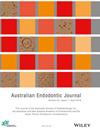Effect of Preparation Designs on Marginal Adaptation and Fracture Resistance of Endodontically Treated Teeth Restored With Different Composite Materials
Abstract
The objective was to evaluate the marginal adaptation and fracture resistance of endodontically treated teeth (ETT) restored using various preparation designs and materials. Except for the positive control group (n = 15), 135 teeth with ETT were divided into three main groups (n = 45): MOD (Mesio-occlusal-distal), retention slots and cuspal coverage. Each main group was further subdivided into three sub-groups (n = 15): nano-hybrid composite resin, short fibre-reinforced composite resin (SFRC) and a CAD/CAM nano-ceramic composite block. After chewing simulation, the specimens were examined using SEM; a quantitative marginal adaptation analysis and fracture resistance test were performed. MOD preparations exhibited the highest marginal deterioration (p < 0.001). Gingival marginal deterioration in nano-hybrid composite restorations was significantly higher than in CAD/CAM restorations (p = 0.023), though the difference between nano-hybrid and SFRC restorations was not significant (p = 0.447). The MOD cavity showed significantly lower fracture resistance compared to retention slots and cuspal coverage groups (p < 0.001). SFRC demonstrated the highest fracture resistance (p < 0.001).

 求助内容:
求助内容: 应助结果提醒方式:
应助结果提醒方式:


